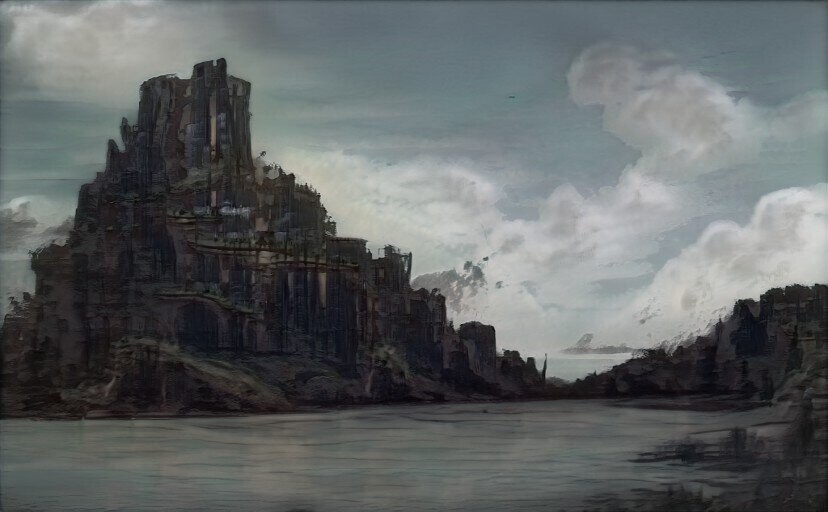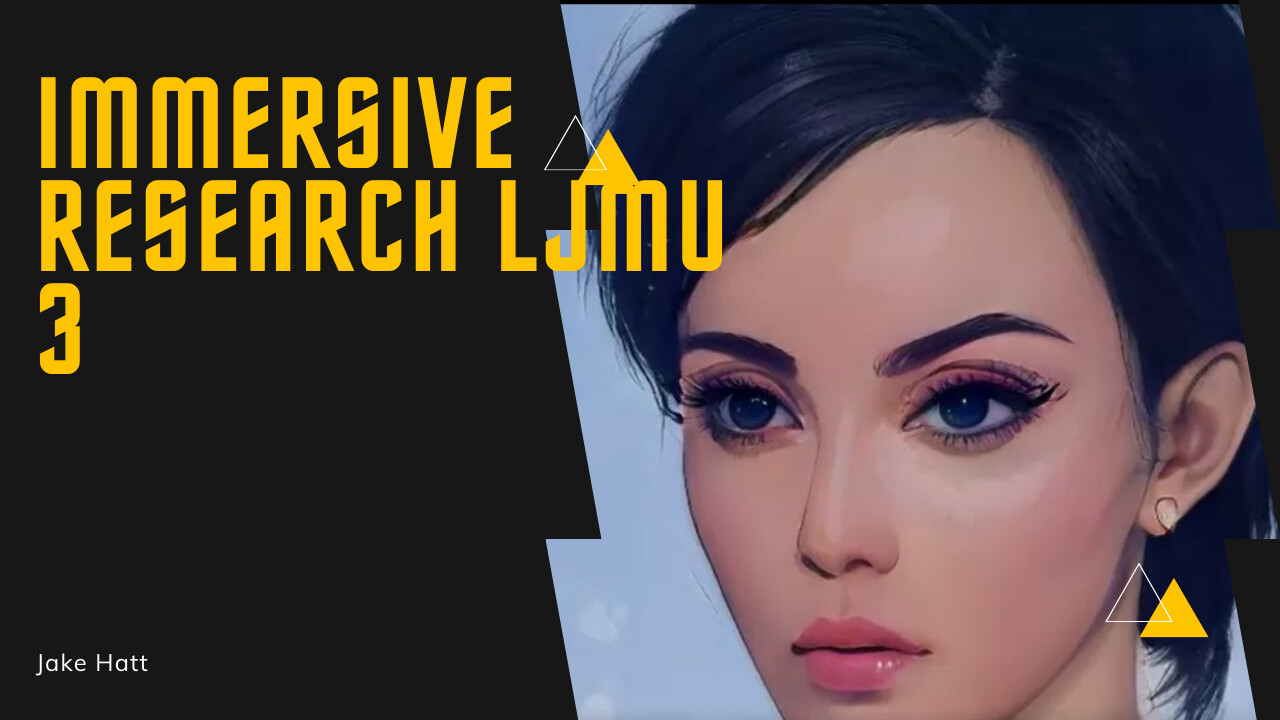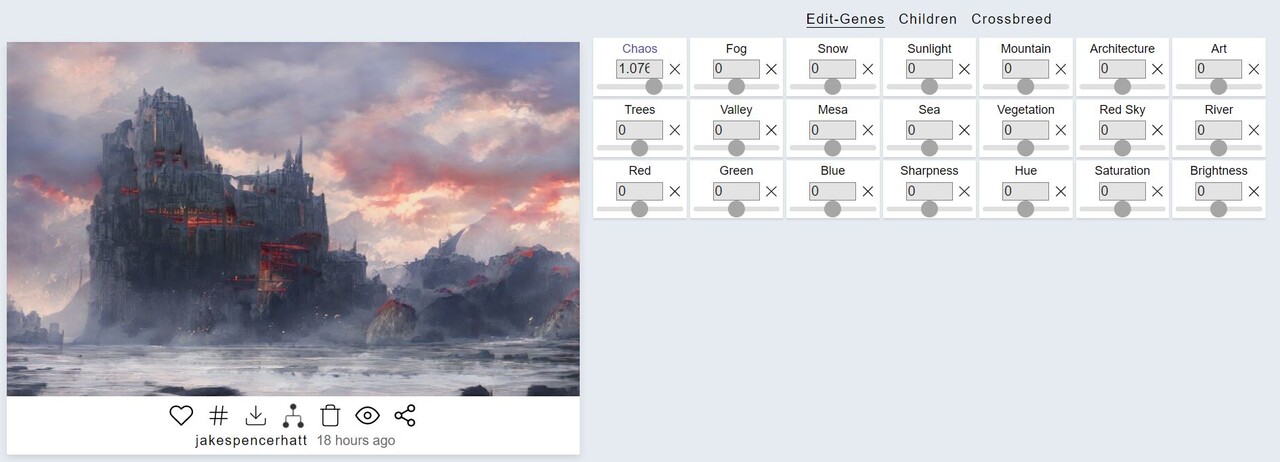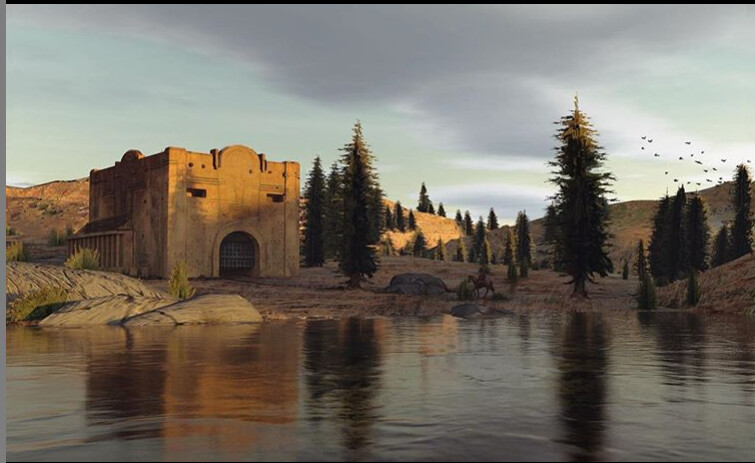Artificial intelligence is something that both fascinates and terrifies me. While AI passing the Turing test is probably a long way off yet, the fact that AI is infiltrating our workplaces with alarming frequency is no longer science fiction. In the previous decade, the idea that an AI may be able to create appealing artwork probably would have been met by me with outrage, anxiety, and apprehension, yet now it seems to be more real than ever.
If you don't believe me here is a website dedicated to selling unique artworks generated by AI https://www.artaigallery.com/
Ever the optimist, I choose to see this as more of a "can't beat em join em" kind of situation. In this research, I'll aim to understand how AI can help better us as artists rather than replace us entirely.
Awaiting human input, digital painting by myself.
First I want to be very careful in my definition of AI, as it has become internet shorthand for a lot of things. What I am specifically talking about is anything that uses neural network machine learning.
I see the ability to learn from past successes and failures in some way to overcome a current task as the most valuable foundation of our human intelligence. It's the basis of most other forms of intelligence; whether that be emotional intelligence, academic intelligence, and so on. To have grown intelligence in a field, at some point, you did something well. You then took the endorphins and used them to connect the neurons associated with whatever you learned with a positive experience, associating that pathway with a positive outcome. Likewise, at some point, you must have messed up. In this case, the neurons associated with this memory are negative and you feel discouraged to go down this pathway again.
Any neuroscientists in the house may be headbutting their monitors in disgust at this explanation, so bear in mind I'm an artist, not a scientist, however, this simplified concept does appear to be the core basis for AI machine learning.
while a computer cant "feel" the positivity or negativity associated with any certain act, it can be taught to index pathways as positive or negative. a good outcome may be simply numerical, for example, distance traveled in an obstacle course or something more complex and sinister, like a person's likeness. the most successful solutions are often bred with other successful solutions, and at other times total mutational randomness in order to slowly evolve to the best possible solution to the given task.
(Above) Google's Deepmind AI learning how to get a puppet to walk without ever seeing a walk cycle
(Above) Comedian Jordon Peele in association with BuzzFeed demonstrating how machine learning might be used to a more sinister end. This is where I believe that AI and machine learning pose a more-than-moderate risk to our ideas of identity and privacy. I believe that in coming years a lot more regulation will be associated with so-called "DeepFakes"
ARTBREEDER
https://artbreeder.com/ is one of those services that has you yelling "how is this free????" into the aether. essentially through machine learning, you can "breed" artwork with other artwork to create new artwork. it seemingly cuts the process of actually painting a character or landscape into a process of unnatural selection. you see in this case the process that selects whether an outcome is good or bad is in control of the user, even allowing for individual "genes" to be altered before committing and "breeding" the next generation.
(Above) this cool foreboding fortress is 100% unique to me based on minute decisions made over several generations. The images below show this artwork's "ancestors".
This is the AI's interpretation of my piece, a lot of information is lost due to the chaos of the process however the water and architecture placement remains the same throughout the process
this is where the piece became the most chaotic, however, you can see the beginnings of the focal tower.
 This is where the piece transforms into its current composition. the final stage was more to do with style.
This is where the piece transforms into its current composition. the final stage was more to do with style.While it is fair to say that in its current chaotic state it certainly won't compete with the most talented artists out there, I think it's a fantastic companion to quickly generate early concepts or visualizations. I also see there is a real time-saving element to this and future versions of this. while it is very difficult to control it to the point where you are designing what is in your head, I think the chaos really brings a lot of "happy accidents" to the mix.
What i find quite odd is the portrait generator is actually much easier to control, perhaps due to how facial landmarks are much more consistent across the board than geographical landmarks. I was briefly reminded of https://thispersondoesnotexist.com/, a frighteningly convincing image of a human being generated with a press of the refresh button.
the following video is an experiment I conducted in artbreeder involving the same face with the same genes but from different angles, and gives an idea of how well the AI grasps the concept of a likeness. The idea here was it may help artists understand what their characters need to look like from certain angles.
this character was also generated with many generations of... grandparents i suppose? with minor changes each time.
It's quite hard not to see this as a little unsettling, like breeding the perfect human. There are even sliders for racial percentage which opens more questions than I care to get into on this post.
Nevertheless, It is an interesting tool I could see being used. In fact, Travis Davids used it for his visualization of real-life south park characters here:
https://www.artstation.com/artwork/D5zRxn
In his description, he also outlines many other AI techniques used in his project, so it is at least a testament to how AI may help us as artists visualize to a much higher level.
Personally, I feel that a computer's grasp of creativity is chaotic and random, and our input as curators is what guides them to the path we select. I will conduct more investigations to see how this can be explored further
References:
https://www.artaigallery.com/
https://www.artstation.com/artwork/D5zRxn
https://youtu.be/gn4nRCC9TwQ
https://artbreeder.com/
https://youtu.be/cQ54GDm1eL0







